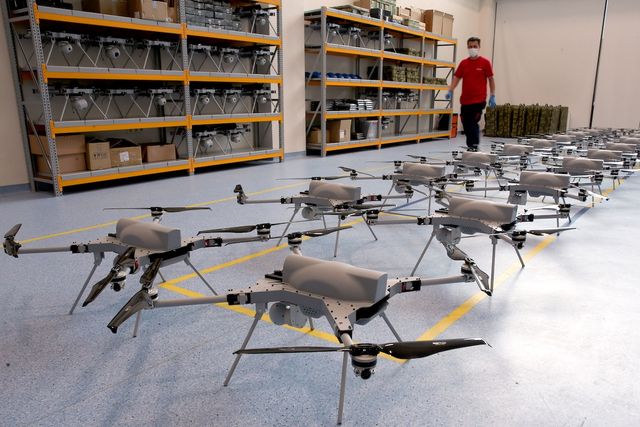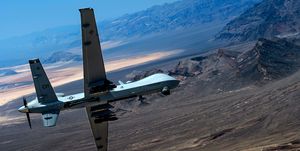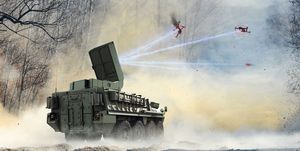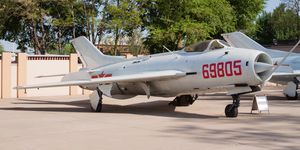
Imagine a few years from now, U.S. supply troops have just wrapped up a field exercise in Poland, showing solidarity with the country in the face of saber-rattling from nearby Russia. As the sun sets, GIs rest next to their trucks, knowing the Russian 18th Guards Motor Rifle Division is encamped just a few miles away.
The soldiers hear a faint buzzing in the distance and see a dark cloud crossing the horizon. Suddenly, a solitary scout drone swoops low over the Americans—it’s seen them. Like a predator catching the scent of prey, the cloud stops dead in its tracks, then rushes toward the soldiers with astonishing speed. Following programming orders, each of the 60 drones scans the ground below and picks its target, while AI ensures no two drones aim for the same vehicle. The drones arm their explosive payloads just as the first bursts of gunfire begin lancing out from the American position.
Sometime around March 2020, this longstanding trope of science fiction—autonomous attack drones eliminating human beings on the futuristic battlefield—crossed over into science fact. That’s when, during the Second Libyan Civil War, the interim Libyan government attacked forces from the rival Haftar Affiliated Forces (HAF) with Turkish-made Kargu-2 (“Hawk 2”) drones, marking the first reported time autonomous hunter killer drones targeted human beings in a conflict, according to a United Nations report.
Unmanned combat aerial vehicles, loitering munitions, and the Kargu-2 “hunted down and remotely engaged” HAF logistics convoys and retreating fighters, the UN report found. The autonomous drones were programmed to attack targets “without requiring data connectivity between the operator and munition,” meaning they located and attacked HAF forces independent of any kind of pilot or control scheme.
Here’s how it works: The drone operator loads a set of target coordinates into the Kargu-2’s software. The drone then takes off and travels to the coordinates, searching for objects on the ground that fit the profile of preferred targets. Once the drone identifies a target, it swoops down on the target at high speed and detonates an onboard explosive package, with an effect similar to that of a shotgun blast.
“The first use of autonomous weapons in war won’t be heralded with a giant fireball in the sky,” says Zachary Kallenborn, an official U.S. Army “Mad Scientist” and national security consultant. “It may just look like an ordinary drone. The event illustrates a key challenge in any attempt to regulate or ban autonomous weapons: How can we be sure they were even used?”
The Evolution of Military Drones
One major difference between a remotely controlled attack drone and an autonomous drone is the software, which might be difficult to obtain from scattered bits of plastic for forensic analysis.
The U.S. Army is working on autonomous drones, including the Bell Textron M5 medium robotic combat vehicle. The M5 is an uncrewed, 10-ton tracked armored vehicle that looks like a miniature tank and has a top speed of 40 miles per hour. It features a 30-millimeter XM813 chain gun and is designed to operate alone or as a wingman to M1A2 Abrams tanks and M2 Bradley infantry fighting vehicles.
The key difference between the Army’s drones and the Kargu-2, however, is that the Army insists on a “human in the loop.” The drone might search for targets autonomously, but it can only open fire once a human operator gives permission. This allows the operator to call off an attack if the drone has mistaken a civilian for a soldier.
Some events in the history of mankind, like the 1945 atomic bomb test at the Alamogordo Bombing Range in New Mexico, are so profound, they serve as a divider between one social, economic, or military era and another. The events in Libya may similarly divide the time when humans had full control of weapons and a time when machines make their own decisions to kill.



